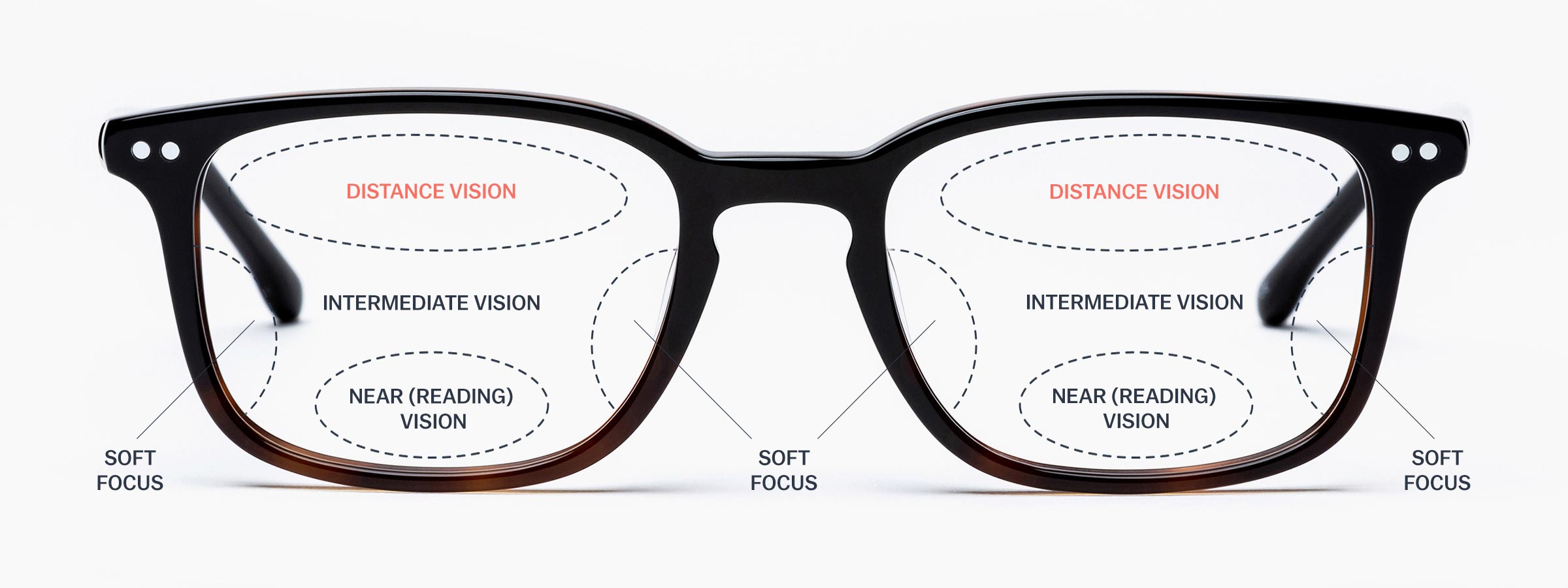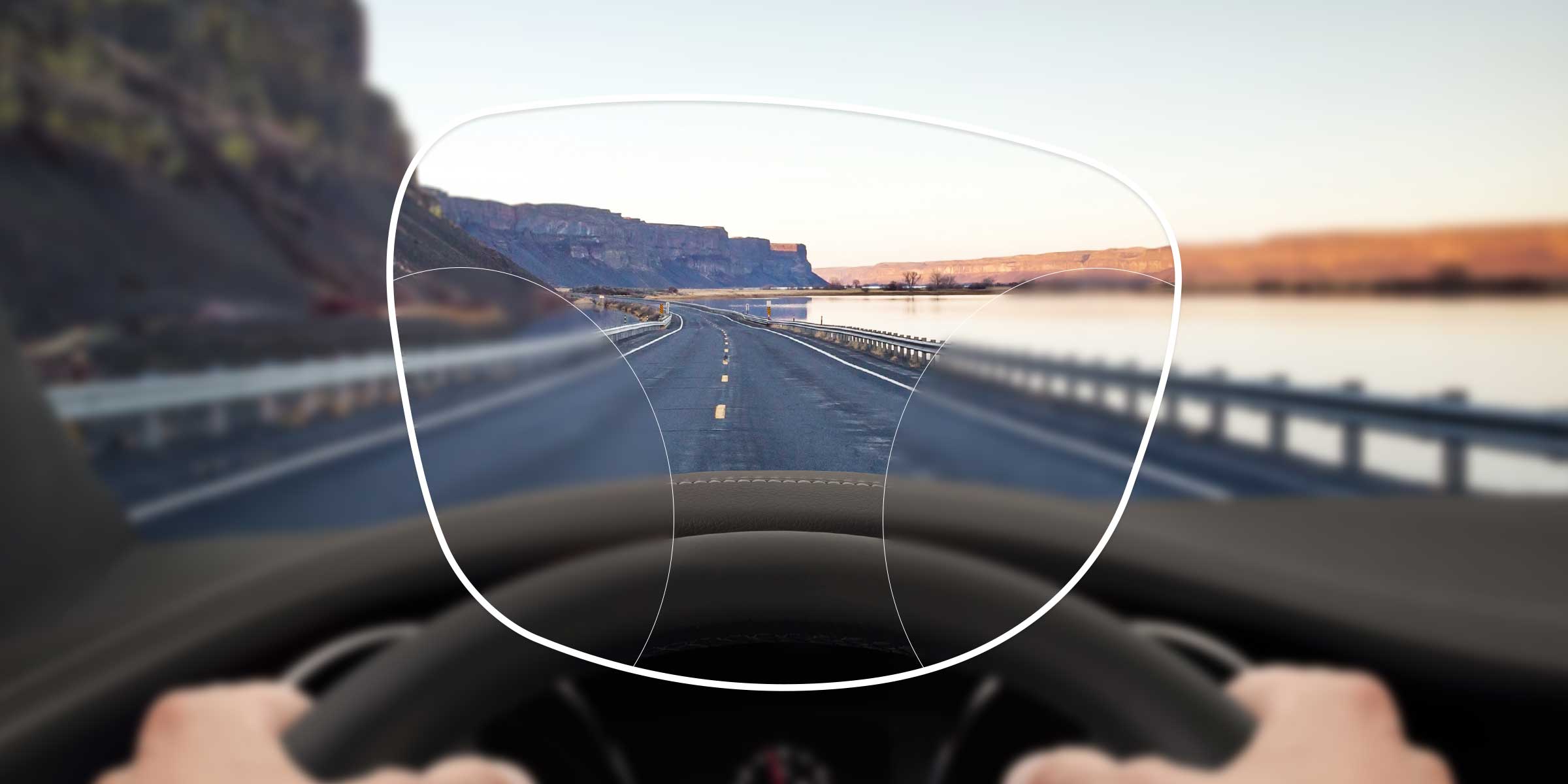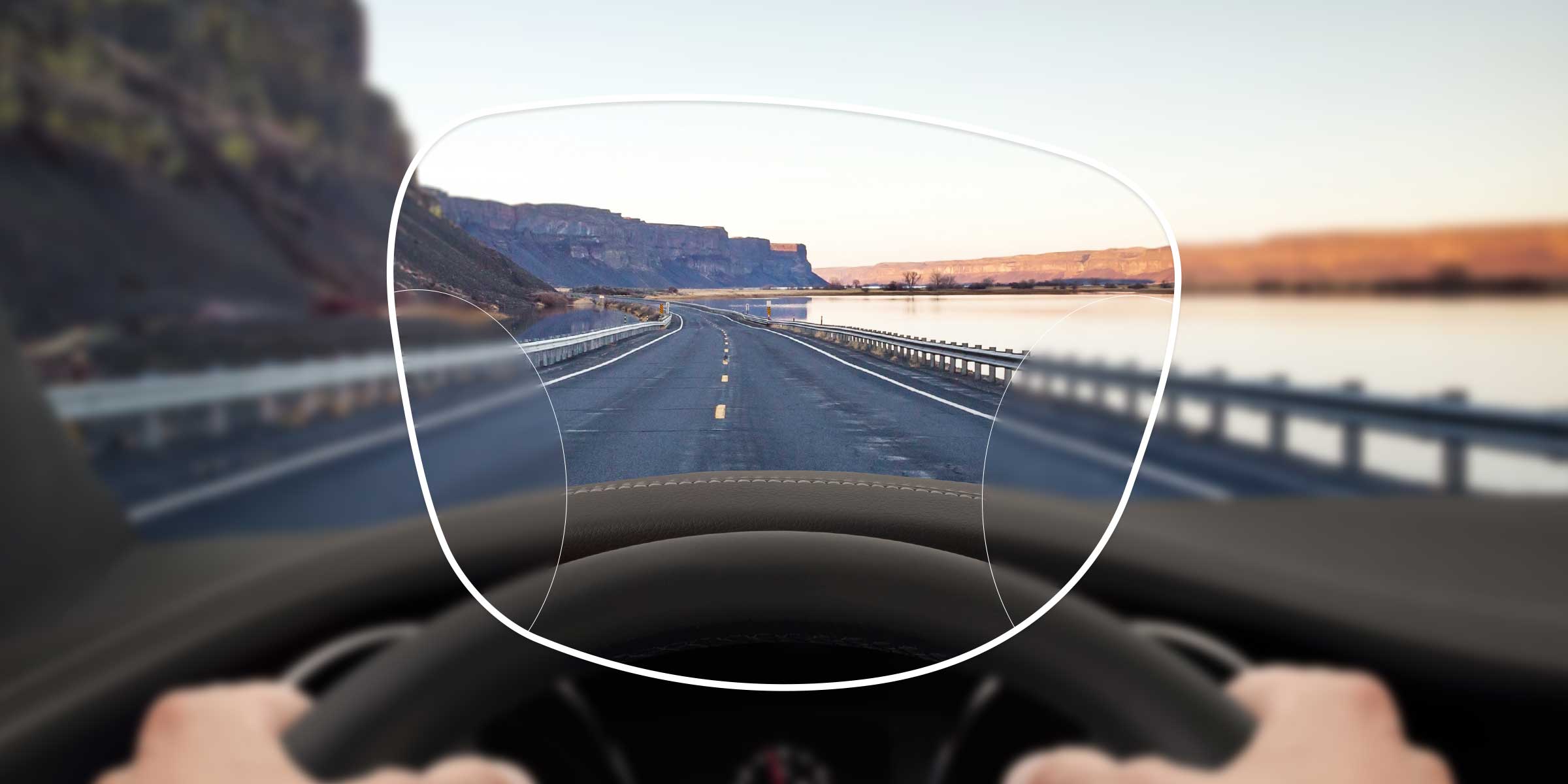Learn all about progressive lenses
If you’ve been considering trying progressive lenses, this article is for you. Here we explain everything about varifocal lenses, including how they were first developed, the different types, and the pros of cons to using this lens.
Definition & Origins
Varifocal lenses provide continuous vision for all distances in a single lens, and correct presbyopia. They are often described as having 3 ‘portions’ of vision: long distance at the top of the lens, reading at the bottom, and intermediate in the middle.

Varifocal lenses are technically called ‘Progressive Addition Lenses’ (PAL), or Progressive Power Lenses (PPL), but are commonly known as varifocals. The first patent for the varifocal lens was in the early 20th century, though they weren’t launched commercially until 1955, when Irving Ripps at Younger Optical developed the ’Younger Seamless Bifocal’. As the name suggests it was based on a bifocal lens, and the design was quite basic.
All varifocal lenses have an element of peripheral distortion, which is due to the way the lenses are designed, and is completely normal. Better lenses manage this distortion better and move it further towards the edges of the lens, thus improving the field of vision and ease of use for wearers.
Basic lens designs can be described as ‘off the peg’ and one size fits all. This is because these lenses assume a prescription is only spherical. This can make it difficult to adapt to for higher prescriptions, especially for those with a high astigmatism.
Modern ‘Freeform’ lens designs offer a much better experience. Freeform lenses use computer-aided design and a digital manufacturing process to provide a more customised result. Think of them like an off-the-rack suit that’s then been altered to fit by a tailor.
The increase in lens design options can make choosing the best varifocal lens a difficult decision. Most opticians will offer a broad range of varifocal lenses and we currently offer 3 types of varifocal:
Varifocal Advanced

Our Advanced varifocal lenses are made with a modern Freeform lens design and provide a good field of vision at all distances when compared to basic lens designs.
Elite HD

Elite HD features multi-aspheric, Freeform lens technology including a special aberration filter to greatly reduce distortion at the edge of the lens.
Binocular balancing calculations are made to create the smoothest power transitions throughout the lens. Elite HD offers a 30% improvement in field of vision compared to a conventional lens.
Supreme HD

In Supreme HD varifocal lenses, Digital Ray Path technology takes account of the specific frame, prescription, and optical centres, producing a lens that greatly reduces unwanted aberrations, improving field of vision at all distances.
Excellent for desk, tablet, and reading distances where they offer a 20% wider field of view than Elite HD, Supreme HD are our recommended lenses for all wearers.
Occupational Varifocals

There are a group of varifocal lenses, called ‘Occupationals’, that are designed specifically for desk work and computer use.
Usually the portion of the varifocal lens used for middle distances has the narrowest field of view, so those who perform a lot of desk-based or arm’s length tasks can sometimes struggle. Occupationals sacrifice most or all the long distance portion of a varifocal lens. In effect, this transforms the varifocal to one that changes gradually from the intermediate correction to the near one.
This enables the intermediate and near parts of the lens to have a wider field of vision and less peripheral distortion than a conventional varifocal lens. Unfortunately, this means they can’t be used for driving, so are best used in addition to a conventional varifocal. Occupationals aren't available to order on our website at the moment, but we hope to offer this type of lens soon.
Varifocal lenses: Pros & Cons
The main advantage of varifocal lenses is that they allow the wearer to see at all distances with the same pair of glasses. For the majority of people they are the most convenient way to resolve the problem of needing different corrections for long distance, intermediate, and near. Once the glasses are on there’s no need to take them off, carry more than one pair of glasses around or swap between pairs.
However, for some people the blurring of images in the periphery of the lens, the limited field of vision for middle and near distances, and the head movements that they have to make to see through the correct parts of the lens for different distances are difficult. Adapting to varifocal lenses can take a little while for many new wearers, but most adapt to them after several days.
Getting used to varifocal lenses for the first time
When a first-time varifocal wearer puts on their new glasses there are several things to be aware of. Check out our advice below.
Firstly, all varifocal lenses have a narrower field of view for the intermediate and close portions, so there will be some blurring at the lens periphery. In better lenses these effects are less pronounced, but all lenses have this to some extent.

It’s important to remember that there will be a part of the lens that will correspond to any distance. It’s the job of the wearer to select the best part of the lens to look through depending on whether the object they’re looking at is far away or close. The lenses won’t auto-focus like a digital camera does; therefore the wearer needs to adjust their head and eye position so they’re looking through the ‘sweet spot’.
Generally speaking, the further away something is, the higher up the lens the wearer needs to look. Additionally, the closer or smaller something is, the more towards the bottom of the lens they’ll need to look.
Because a varifocal lens contains a magnified reading portion at the bottom, near wearers should be careful of stairs, kerbs, and other objects at their feet as these will appear blurry. We suggest tucking your chin in to your chest so that you’re looking towards the less magnified top of the lens.

Driving in varifocals is perfectly safe. But only so long as the wearer is comfortable wearing them indoors and has perfected the head movements needed to position the centre of the lens in the direction of what they want to look at – otherwise pulling out at junctions and reversing may be quite dangerous!
Due to the adaptation period needed, most opticians will offer a ‘tolerance guarantee’ (typically between 30-90 days) to allow new wearers to get used to the new way of viewing the world. We’d advise choosing to buy from an optician offering the longest adaption period to give you the best possible chance of getting used to the lenses. Here at Glasses Direct we give you a full 90 days to adjust to your new varifocal lenses, so you can buy with confidence.
